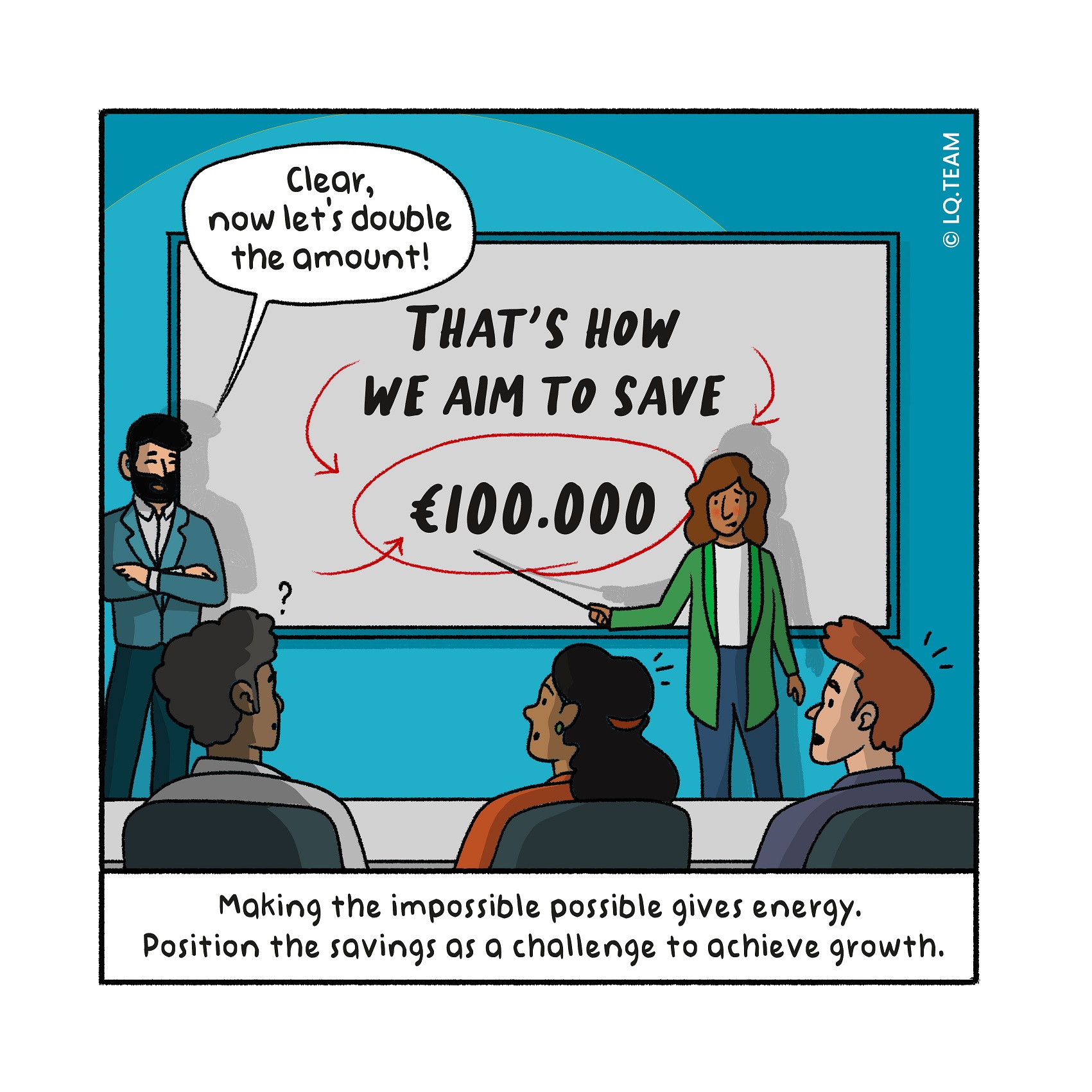
Nut to crack: How do you reduce costs in a way that creates energy rather than draining energy?
You can already hear the gossip – another cost-reduction operation. And you may not be looking forward to another one either. But whether you like it or not, costs must come down so as not to endanger the company’s health, which would threaten its long-term survival. So savings have to be realised. The only question is how: How do you do this in a way that does not drain energy, and even better creates energy instead?
Nutcracker: Position the savings as a challenge to achieve growth
Making the impossible possible gives energy. And steering reinvestment in development is satisfying. The example below shows how you can run a cost-saving operation in such a way that it builds energy and pride.
Real-life example: A challenging goal, a surprising result
To finance the intended growth, a multinational’s cfo must cut costs. He wonders how he can bring the cost level down in a way that does not directly lead to resistance. He looks for internal best practices and finds a good example in Asia.
Building on this example, he proceeds as follows. He puts together three multidisci plinary teams. After explaining the reasons for the cost savings, he asks these teams one question: “what amount can you save where, and how?’ The teams have one week to come up with proposals.
The amounts are added up. Next, the cfo encourages the teams to think outside the box by giving them a seemingly unachievable followup task: double the target amount. The teams get back to work. They are supported by consultants who provide external benchmarks. After a few iterations, all three groups come back with proposals that show outofthebox thinking, from cooperation with other packaging partners to eliminating some control activities in the primary process. The teams further develop ideas, and prioritisation and decisionmaking occur. These same people are made responsible for the implementation of the ideas.
The teams visualise how every euro they save is reinvested in growth, and these visu alisations are transparent to all employees in the organisation. This gives an enormous sense of pride to both the teams involved and other employees.
Tip for change leader
Building something gives more energy than tearing something down. Formulate the why of a costsaving operation aspirationally – for example, to provide investment for growth.
Tip for change enabler
Make the reinvestment in growth measurable and visible – for example, in a glass jar you fill with Monopoly money. This way, your story gains strength and credibility and stimulates further action.
Kernel: Play smart
Make a difference by the way you position cost reduction initiatives. Focus on what you want to re-invest. Put the same teams at the helm of determining the savings opportunities and the realisation thereof. Challenge the teams by setting a challenging goal while providing sufficient supportive resources.
